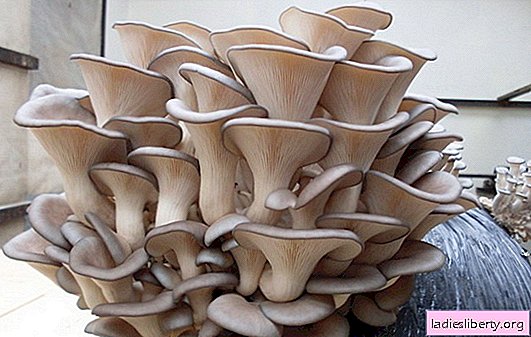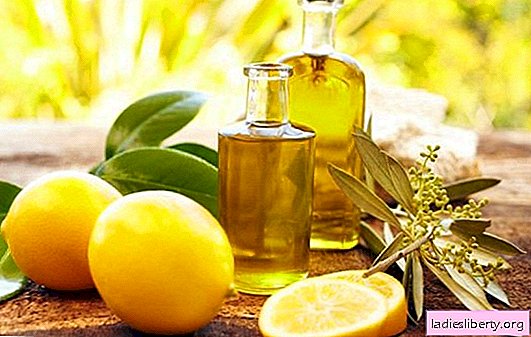
Given the relatively high demand for oyster mushroom and the relatively simple technology of cultivation, its breeding can be a source of additional income.
Novice mushroom pickers need to familiarize themselves with the features of growing oyster mushrooms at home: a variety of varieties of this mushroom, selection criteria for planting material, timing of planting, temperature and humidity parameters, the specifics of care and top dressing, as well as the dangers that await mushrooms during their maturation.
Growing oyster mushrooms at home. The choice of planting material, varieties
Experts recommend starting the cultivation of mushrooms at home with oyster mushrooms due to the fact that this mushroom is suitable for amateur breeding like no other.
In nature, oyster mushroom can be found in the forest on rotted tree trunks or stumps; the mushroom grows well in a damp and cool environment.
Artificial cultivation of oyster mushrooms implies the presence of certain conditions for cultivation and strict adherence to technology to obtain the maximum possible yield.
First of all, the room is being preparedin which oyster mushroom will be grown: ventilation and air heating systems should be provided here, as well as the ability to maintain a certain humidity inside and have lighting.
In addition, the mushroom grower will have to prepare the substrate, the raw material for which may be agricultural waste, sawdust or other materials.
Planting material for growing oyster mushrooms is mycelium (or mycelium), which is a vegetative body of the fungus, consisting of hyphae - thin branched threads.
There are many varieties of oyster mushrooms, as well as hybrid species, characterized by a degree of sensitivity to different levels of humidity, temperature amplitudes, carbon dioxide concentrations, and the ability to give a good crop at a certain time of the year.
Oyster mushroom - the most famous of the varieties, in natural conditions most often grows on stumps and fallen trunks of deciduous trees, bears fruit in the second half of summer and early autumn. The pulp of the mushroom is white in color and with a pleasant smell, the seed is a substance of white or pink color.
Oyster mushroom pink (or flamingos) refers to fast-growing varieties - the fruits appear after 10 days from the moment of sowing the mycelium, somewhat more heat-loving compared to other varieties (fruits are formed at a temperature of 16 to 30 degrees C).
Oyster mushroom - one of the most valuable varieties, has a dark gray hat and flesh of a bluish, purple or brown hue. At home, it can give a good harvest throughout the year.

Oyster mushroom orange It got its name due to its bright colors, in natural conditions it grows on stumps and deadwoods in deciduous forests or in gardens, is suitable for eating only while young - an adult mushroom becomes hard and gets an unpleasant odor.
In addition, the most famous varieties include oyster mushroomshaped like a shepherd’s horn lemon - with bright yellow hats, steppe, growing on the ground and, unlike other mushrooms, belonging to the family of umbrellas. Subject to strict adherence to technological requirements, all these varieties are remarkably fruitful in artificial conditions.
In addition to natural varieties, there are artificially bred oyster mushroom strainsobtained by breeding and hybrid crossing varieties in various combinations. Due to the high yield, the greatest demand among mushroom growers is such strains as NK-35, P-20, P-77, 420, 107, K-12, K-17 and others. Each of the strains has its own characteristics, which should be taken into account when choosing planting material for specific conditions. For the cultivation of oyster mushrooms in the summer, if it is not possible to strictly adhere to the required temperature, you need to try to choose a variety or strain that can bear fruit in such conditions without loss of yield. Given the wide range of planting material offered by the market today, it is possible to choose mycelium for conditions that have a significant range of deviations from generally accepted standards. There are several types of mycelium, among which the most famous are cereal and compost. The cereal type of mycelium has established itself better than others, due to its high productivity and unpretentiousness to storage conditions.
Growing oyster mushrooms at home. Sowing
One of the most significant moments in the technological cycle of oyster mushroom cultivation is the preparation of the substrate, from which the so-called substrate blocks will subsequently be formed. As the raw material for the preparation of the substrate, the most available material in this region can be selected: sawdust, husk or agricultural waste, grain straw. The most versatile raw material for the manufacture of the substrate is wheat strawcrushed to a fraction of 5-10 cm.
Primarily carried out heat treatment of raw materials for disinfecting the mass from competitive and pathogenic microflora. To do this, the straw is placed in a container of water heated to a temperature of 60-65 degrees C and maintained in this mode for about 3 hours. Boil water should not be, try to adhere to the required temperature during the entire soaking time. At this temperature, unwanted microflora dies, only the so-called thermophiles survive, which do not interfere with the growth of oyster mushroom.
The next step will be drying the substrate to a humidity of 70% and its cooling to a temperature of 20-25 degrees C for about 8 hours. It is possible to determine the necessary mass moisture at home by simply squeezing it in your hand - while a drop of moisture (not a stream) should stand out. And only after that it is possible to start ramming the substrate and sowing the mycelium.
A small amount of substrate is laid on the bottom of pre-prepared plastic bags, then a layer of mycelium is poured. The mycelium several hours before planting should be removed from the refrigerator, brought to room temperature and thoroughly mashed. There should be about 12 layers in the bag. The amount of mycelium in the substrate block is 3-5% of the amount of straw, if it is less, the growth time will increase, if the amount is excessive, the substrate may overheat, which will lead to the death of the fungus. Seal the bag should be within reasonable limits - to get about 0.4 kg / liter, as a result, the bag with a diameter of 25 cm and a height of 70 cm will weigh 12-14 kg. It is not recommended to use bags with a diameter of more than 40 cm. One of the main requirements when laying the substrate blocks (sometimes called mushroom beds) is to observe cleanliness - hands, clothes, tools and devices. Perforation of the bags is carried out using holes or cuts 7-8 cm, which should be 10-20 on each block.

Followed by incubation periodwhen within 10-14 days the mycelium grows in the substrate. This should happen in a room with an air temperature of 20-24 degrees C, the temperature of the substrate will be 22-28 degrees C. It is unacceptable to exceed the temperature above 28 degrees C, because this can lead to increased mold. Humidity should be 90-95%, natural ventilation, additional lighting is not required. On the 2nd or 3rd day white spots appear on the substrate, created by the hyphae of the fungus, by the end of the incubation period, the entire block will be white. Then, within 4-5 days, a period of transition to fruiting occurs.
After this, the blocks are transferred to the room in which fruiting will occur. The fruiting bodies of the first wave ripen within 7-10 days. The optimal conditions will be: air temperature 13-15 degrees C, temperature inside the block 15-17 degrees C (for some new strains the upper temperature limit can reach 25 degrees C), air humidity 85-90%, illumination - not less than 100 lx / m2. Air recirculation should be organized to remove excess carbon dioxide, metabolic products and excess moisture from the room. Lighting can be arranged using fluorescent fluorescent lamps. The required temperature is maintained by adjusting the heating and ventilation.
Over the next 7-10 days occurs ripening fruiting bodies the second wave, requiring the same lighting conditions, temperature and humidity, but ventilation should be more intense. The most active fruiting occurs during the first two weeks - this period accounts for about 70% of the crop. First, the so-called primordia appear - the rudiments of future mushrooms, and after a few days the mushroom ripens. At this stage, in addition to maintaining the necessary humidity, irrigation is sometimes used, as during the ripening period, the first and second wave mushrooms may not have enough moisture, and this may lead to a loss of quality. To obtain the required level of humidity, you can use conventional garden sprayers or household humidifiers. The humidity value is controlled by a hygrometer. Excess moisture can lead to the appearance of dark green mold spots.
Growing oyster mushrooms at home. Care, dressing
The raw material, on the basis of which the substrate is made, often contains an insufficient amount of chemical elements (such as sodium, phosphorus, potassium and others) necessary for the intensive growth of the fungus. The use of various nutritional supplements can significantly affect the yield of oyster mushrooms, including natural ones - wheat bran, soy flour, alfalfa hay, cocoa shell, beer pellet, alfalfa seed flour, malt sprouts, feather flour, clover hay, grass flour or mineral, representing various calcium compounds: CaCO3 - chalk or calcium carbonate, quicklime CaO or hydrated Ca (OH) 2 lime, CaSO4-gypsum or alabaster, dolomite flour - CaCO3 plus MgCO3. Some strains of oyster mushrooms today without the addition of fertilizing do not bear fruit at all.
Nutritional supplements are introduced at the stage of heat treatment of the substrate. The use of additives can have a side effect, so they should be used in compliance with certain rules. Firstly, when applying top dressing, it is necessary to strictly observe hygiene and sanitation measures: used additives should be treated before application with a disinfectant, for example, 2% formaldehyde solution. The heat treatment time can be slightly increased for complete absorption of the introduced compounds by the substrate. Failure to comply with the norms of making additives can lead to a significant increase in temperature inside the substrate block, which can cause the fungus to die. In addition, the excess of the required amount of the additive leads to the activation of the so-called competitive microorganisms, i.e. mold, nematodes, etc. Distribute dressing in the substrate should be evenly distributed. At the stage of the first fruiting, the abundant emission of carbon dioxide caused by the use of nutritional supplements can degrade the quality of the crop, therefore, special attention should be paid to the ventilation of the room at this time. Thus, to obtain a positive effect from the use of additives without loss of quality, one should strictly adhere to the instructions for use when feeding.
The rate of make-up depends on the concentration of nutrients in them. So, for feather flour, the norm is 3% by weight of the substrate, soy flour - 5%, bran and grass meal are introduced in the amount of 5-15%, clover or alfalfa hay - 10-20%. Calcium compounds make it possible to maintain the pH of the substrate at the level of 7.0-7.5, improve the structure of the substrate, and remove excess water. Practice shows that the use of natural and mineral nutritional supplements, provided that the dosages and sanitary requirements are strictly observed, can increase the yield of oyster mushrooms by 30-40%.
The main pests of oyster mushrooms and ways to combat them
In the process of growing oyster mushrooms, many mushroom growers have the problem of controlling pests and diseases of the fungus, including insects, microorganisms, bacteria, as well as diseases of a non-parasitic nature. Most often there are such insect pests as:
- mushroom mosquito (sciaridae), which damages the mycelium and the body of the fungus with larvae. Carriers of larvae are adult insects. The reasons for the appearance of this harmful insect are non-compliance with sanitary standards or mistakes made in cultivation technology;
- humpback flies and gall midges appear in the premises for the same reasons and affect the mycelium and the body of the fungus in the same way as a mushroom mosquito;
- saptrophic mites and predatory damage young mycelium by adults and destroy hyphae with larvae. In addition, they transmit spores of pathogens; may appear due to too wet raw materials or non-compliance with hygiene requirements;
- wood lice, fools (hypogastrura, podura) harm the mycelium and the fruiting bodies, appear in too wet rooms or through a poorly processed substrate.
The most common oyster mushroom disease is all kinds of moldsuch as green mold, orange mold, hairy mold, brown mold, as well as dung beetle (coprinus), mucous and so-called imperfect mushrooms. Most of them affect the mycelium and the fruit body of oyster mushrooms, and can also cause an allergic reaction in humans. The causes of the onset of diseases are violations of technology, non-compliance with the dosage of top dressing, failure to comply with sanitary measures.
In addition, bacteria (pseudomonas) and non-parasitic diseases have a negative effect on oyster mushroom growth, as a result of which fruiting slows down or stops, and the fruits are deformed and of poor quality. Accurate and strict observance of technology and sanitary and hygienic requirements will help to avoid such troubles.











